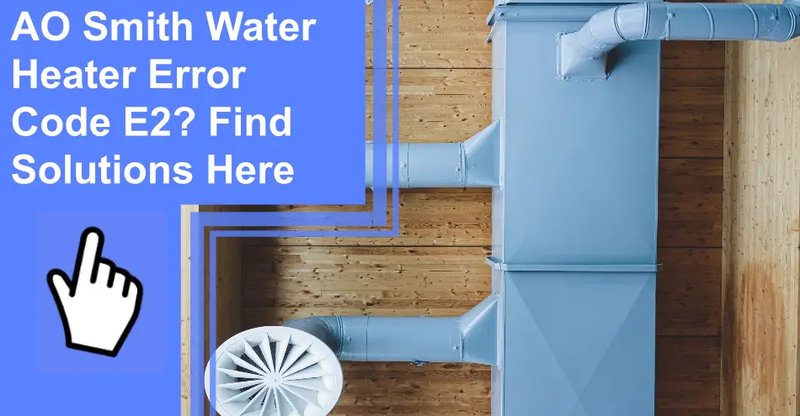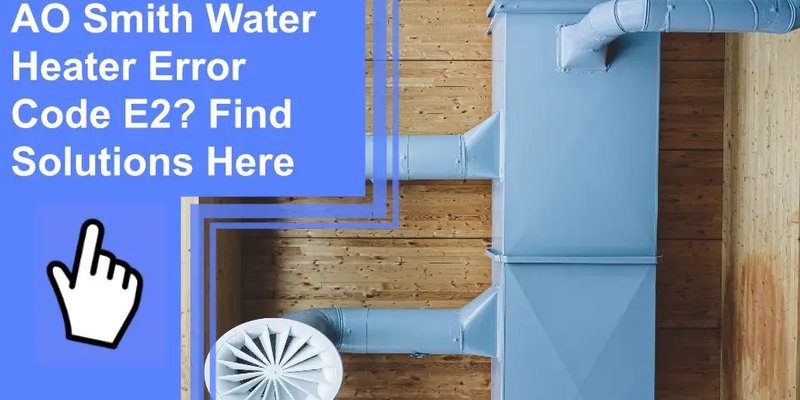
So, what exactly does this E1 error code mean? In simple terms, it’s an indication that something’s not quite right with your water heater’s electric system, specifically relating to the ignition failure. Much like trying to start a car with a dead battery, something is preventing your water heater from firing up and doing its job. But before you panic, let’s walk through the steps to see if you can reset this issue yourself and get back to enjoying those steamy showers.
Understanding the E1 Error Code
Before diving into the solution, let’s understand what’s causing this pesky code to show up. The E1 error is primarily related to ignition issues in your AO Smith water heater. Imagine trying to light a match that’s been dampened; no matter how hard you try, it just won’t catch fire. Similarly, your water heater might fail to ignite due to various reasons such as blocked air supply, faulty ignition sensors, or even electronic glitches.
A significant cause of the E1 error could be due to airflow issues. Your water heater requires a proper outside air supply to function efficiently. If its venting system is obstructed or blocked, the heater won’t get the air needed to ignite. This is much like trying to breathe through a straw — difficult and inefficient.
Another potential cause could be the ignition sensor itself. Over time, these sensors can wear down or become coated with residue, making it difficult for them to accurately detect when the heater should ignite. Think of them as the nerve endings of the heater, alerting it to start and stop as needed. When they fail, so does the heater’s ability to operate smoothly.
Can Resetting Fix the Problem?
You might be wondering, “Can a simple reset solve this issue?” The good news is, yes, sometimes resetting your AO Smith water heater can clear the E1 code. Resetting is like giving your heater a fresh start, much like rebooting your computer when it’s acting up. It can help clear minor glitches that might be causing the problem.
To perform a reset, you’ll typically find the reset button on the front panel of your heater. Before pressing it, make sure to turn off the power supply to ensure safety. Once done, hold the button for a few seconds until you hear a click, indicating that it’s been reset. Turn the power back on and see if your heater returns to normal operation.
However, if the E1 error persists, it suggests that the problem might be more than just a simple glitch. You still have a few more troubleshooting steps to explore, so don’t lose hope just yet.
When to Call for Professional Help
If resetting doesn’t do the trick, it might be time to consider other factors. As mentioned earlier, the issue could lie with the ignition components or airflow. If you’re not comfortable dealing with these parts or if the problem seems more severe, it’s wise to call in a professional. Much like taking your car to a mechanic for a tune-up, a water heater technician can diagnose and fix issues beyond the basics.
Professional help is also advisable when dealing with electrical components, as tampering without proper knowledge can be dangerous. Experts have the tools and expertise to safely handle intricate parts, ensuring your heater is back to working condition without causing further damage.
Ultimately, if your heater frequently displays the E1 error, it might indicate an underlying issue that requires professional attention. Regular maintenance can prevent such issues from recurring.
Preventative Measures and Maintenance Tips
Preventing the E1 error from appearing in the first place is always better than curing it. Just like regular oil changes keep your car running smoothly, routine maintenance of your water heater can extend its life and improve its efficiency.
Begin by ensuring proper ventilation around your heater. Keep the area clear of dust, debris, and any blockage that could hinder airflow. Regularly inspect the venting system for any signs of obstruction or damage.
Another good habit is to check the ignition components periodically. If you’re comfortable, clean the ignition sensor to remove any build-up that might affect its performance. Sometimes, gently rubbing the sensor with fine sandpaper can help it detect changes more effectively.
Finally, consider scheduling an annual professional check-up for your water heater. Experts can identify potential problems early on and make necessary repairs before they become major issues. With these simple preventative measures, you can significantly reduce the chances of encountering that pesky E1 error again.
Remember, understanding and maintaining your AO Smith water heater doesn’t have to be intimidating. Armed with the right knowledge and a proactive approach, you can ensure it runs smoothly, keeping those hot showers coming whenever you need them.
